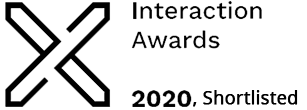COPENHAGEN INSTITUTE OF INTERACTION DESIGN
Encouraging seniors to find purpose and foster meaningful connections
Service Design, User Research
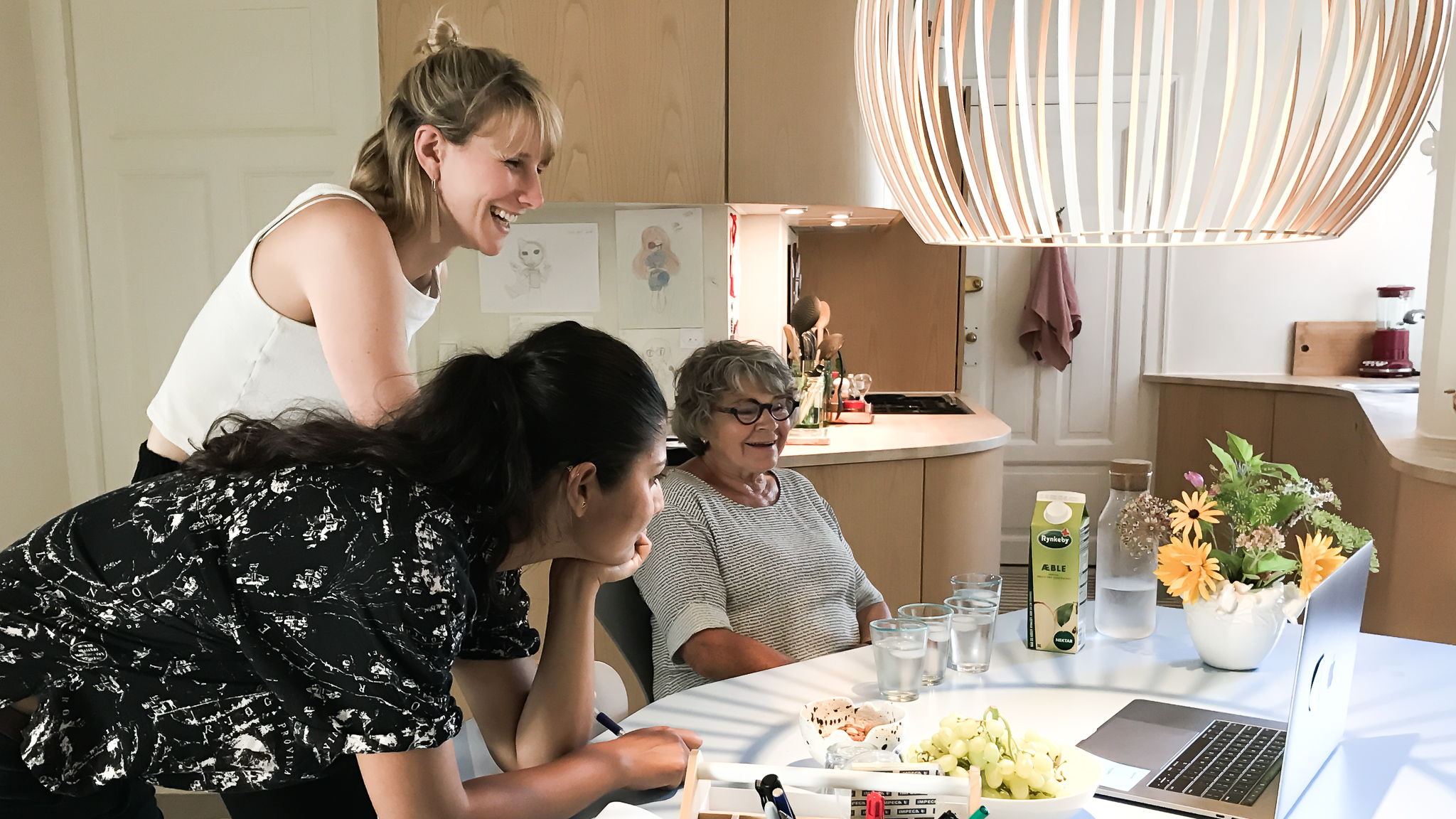
What was the challenge?
What was the challenge?
What was the challenge?
What was the challenge?
What was the challenge?
How might we empower retirees to overcome their loneliness? Aging can be hard as our physical abilities decline and our social ties weaken. This leaves us vulnerable to loneliness and isolation, which can have harmful effects on our well-being.
Lina, a 67 year old Dane, experienced this first hand after retiring from her long-time job as a high school secretary. Without the structure and daily interactions from work, she felt lonely and lost, missing her sense of identity.
Lina was not an isolated case. Retirement poses a significant risk of loneliness, which can lead to severe mental and physical health problems. Current initiatives attempting to address this issue often focus on offering activities and social gatherings, but they overlook a key driver of loneliness: a lack of purpose. These initiatives also tend to target retirees, which is curative rather than preventive.
How might we empower retirees to overcome their loneliness? Aging can be hard as our physical abilities decline and our social ties weaken. This leaves us vulnerable to loneliness and isolation, which can have harmful effects on our well-being.
Lina, a 67 year old Dane, experienced this first hand after retiring from her long-time job as a high school secretary. Without the structure and daily interactions from work, she felt lonely and lost, missing her sense of identity.
Lina was not an isolated case. Retirement poses a significant risk of loneliness, which can lead to severe mental and physical health problems. Current initiatives attempting to address this issue often focus on offering activities and social gatherings, but they overlook a key driver of loneliness: a lack of purpose. These initiatives also tend to target retirees, which is curative rather than preventive.
How might we empower retirees to overcome their loneliness? Aging can be hard as our physical abilities decline and our social ties weaken. This leaves us vulnerable to loneliness and isolation, which can have harmful effects on our well-being.
Lina, a 67 year old Dane, experienced this first hand after retiring from her long-time job as a high school secretary. Without the structure and daily interactions from work, she felt lonely and lost, missing her sense of identity.
Lina was not an isolated case. Retirement poses a significant risk of loneliness, which can lead to severe mental and physical health problems. Current initiatives attempting to address this issue often focus on offering activities and social gatherings, but they overlook a key driver of loneliness: a lack of purpose. These initiatives also tend to target retirees, which is curative rather than preventive.
How might we empower retirees to overcome their loneliness? Aging can be hard as our physical abilities decline and our social ties weaken. This leaves us vulnerable to loneliness and isolation, which can have harmful effects on our well-being.
Lina, a 67 year old Dane, experienced this first hand after retiring from her long-time job as a high school secretary. Without the structure and daily interactions from work, she felt lonely and lost, missing her sense of identity.
Lina was not an isolated case. Retirement poses a significant risk of loneliness, which can lead to severe mental and physical health problems. Current initiatives attempting to address this issue often focus on offering activities and social gatherings, but they overlook a key driver of loneliness: a lack of purpose. These initiatives also tend to target retirees, which is curative rather than preventive.
How might we empower retirees to overcome their loneliness? Aging can be hard as our physical abilities decline and our social ties weaken. This leaves us vulnerable to loneliness and isolation, which can have harmful effects on our well-being.
Lina, a 67 year old Dane, experienced this first hand after retiring from her long-time job as a high school secretary. Without the structure and daily interactions from work, she felt lonely and lost, missing her sense of identity.
Lina was not an isolated case. Retirement poses a significant risk of loneliness, which can lead to severe mental and physical health problems. Current initiatives attempting to address this issue often focus on offering activities and social gatherings, but they overlook a key driver of loneliness: a lack of purpose. These initiatives also tend to target retirees, which is curative rather than preventive.
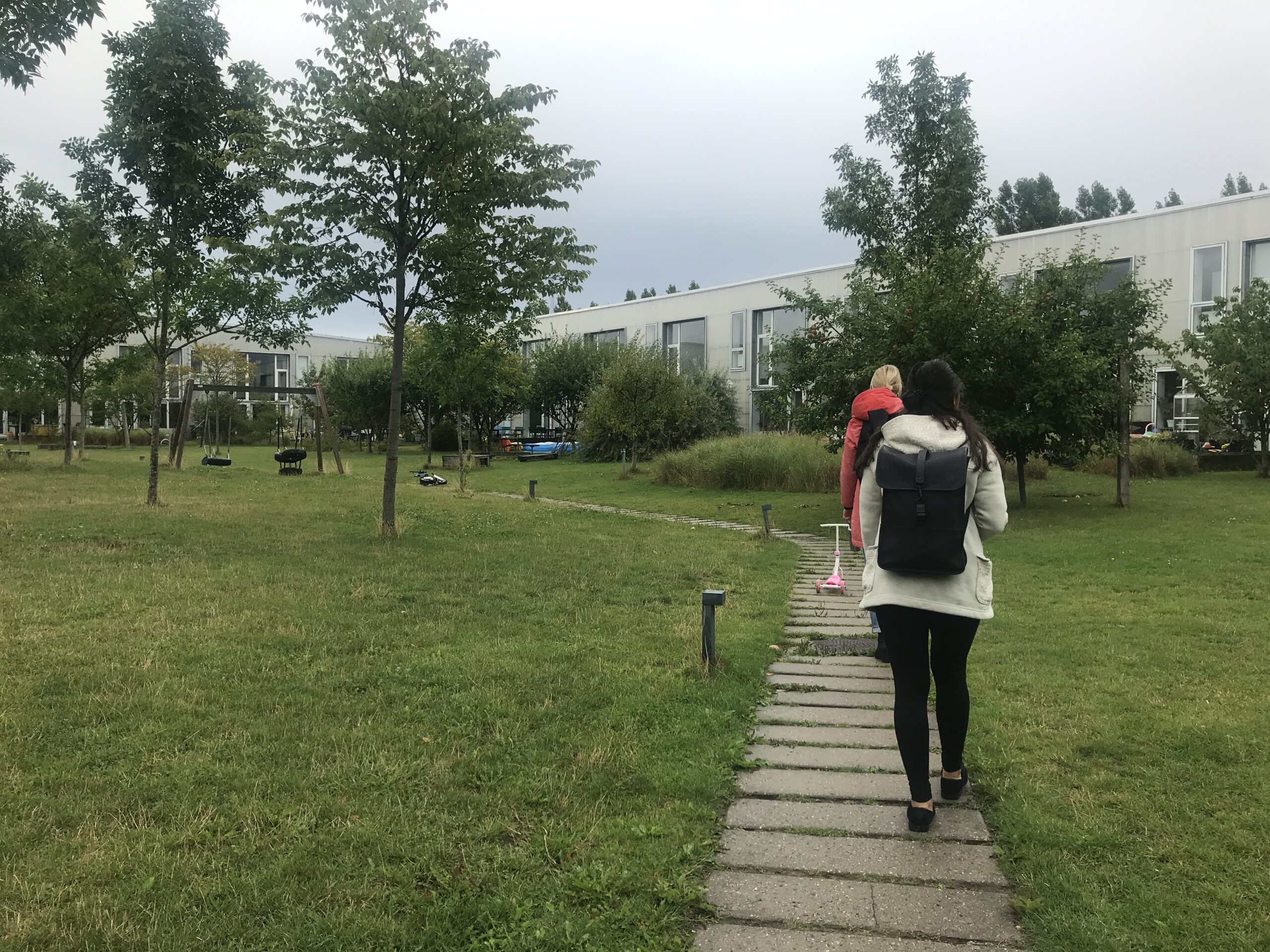
Field research to Lange Eng, cross-generational housing community in Copenhagen

Working closely with seniors to co-create concepts
What was the outcome?
What was the outcome?
What was the outcome?
What was the outcome?
What was the outcome?
We designed Social Kompas, a service that invites soon-to-be-retirees to volunteer for meaningful opportunities that align with their skills, interests and availability.
Research suggested the need for multiple design interventions well in advance of retirement to proactively address loneliness. To ease the transition into retirement, we designed three main touchpoints as part of a pilot service solution that invites soon-to-be-retired people to become volunteers.
We designed Social Kompas, a service that invites soon-to-be-retirees to volunteer for meaningful opportunities that align with their skills, interests and availability.
Research suggested the need for multiple design interventions well in advance of retirement to proactively address loneliness. To ease the transition into retirement, we designed three main touchpoints as part of a pilot service solution that invites soon-to-be-retired people to become volunteers.
We designed Social Kompas, a service that invites soon-to-be-retirees to volunteer for meaningful opportunities that align with their skills, interests and availability.
Research suggested the need for multiple design interventions well in advance of retirement to proactively address loneliness. To ease the transition into retirement, we designed three main touchpoints as part of a pilot service solution that invites soon-to-be-retired people to become volunteers.
We designed Social Kompas, a service that invites soon-to-be-retirees to volunteer for meaningful opportunities that align with their skills, interests and availability.
Research suggested the need for multiple design interventions well in advance of retirement to proactively address loneliness. To ease the transition into retirement, we designed three main touchpoints as part of a pilot service solution that invites soon-to-be-retired people to become volunteers.
We designed Social Kompas, a service that invites soon-to-be-retirees to volunteer for meaningful opportunities that align with their skills, interests and availability. Research suggested the need for multiple design interventions well in advance of retirement to proactively address loneliness. To ease the transition into retirement, we designed three main touchpoints as part of a pilot service solution that invites soon-to-be-retired people to become volunteers.
1. Starter kit
Our starter kit, delivered six months before retirement strategically encourages individuals to plan for their retirement. Our approach of engaging soon-to-be-retired individuals at the right moment prompts them to proactively explore and engage in social activities ahead of their retirement.
Our research revealed that retirees with a strong social network and an active schedule do not only start to build up this network and routines once they retire, but before-hand to prevent falling into a hole of loneliness once they retire.

2. Personal invitations with a sense of purpose
We invite individuals to fill in a short questionnaire to get a better understanding of their background and interests. This helps us tailor our volunteer recommendations and curate personal invites. We emphasize the importance of becoming volunteers rather than just activity participants, aiming to foster not only their social network, but also a sense of purpose in contributing to something meaningful.
From research, we learned that retirees primarily strengthen existing relationships and forge new connections through involvement in activity groups. The act of extending invitations also plays a pivotal role in lowering the hurdle to joining these groups. Research also highlights that combating loneliness in retirees involves more than just fostering strong social bonds. It also requires engaging in meaningful tasks that instill a sense of purpose and being needed.
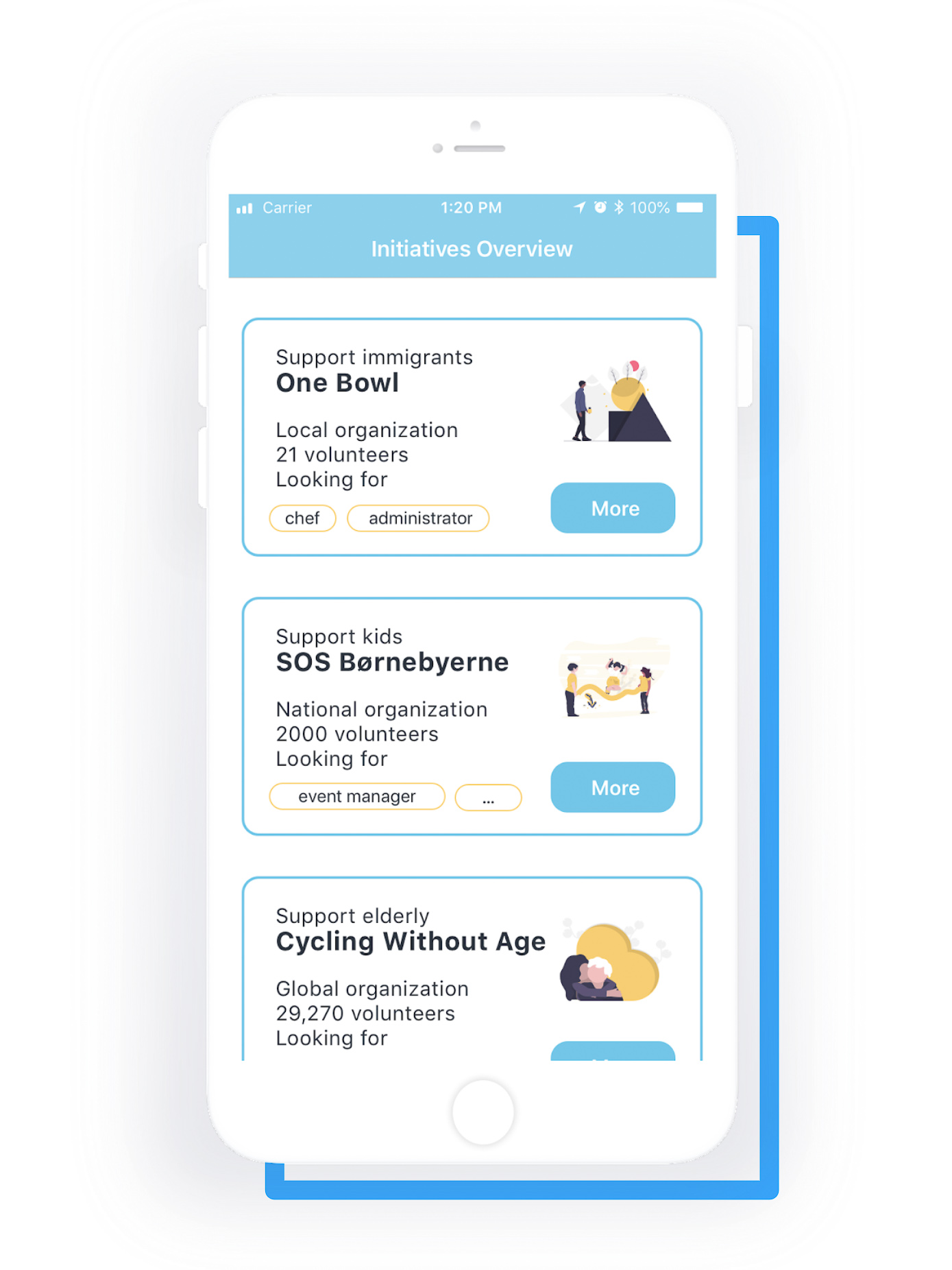
3. Social community
Last but not least, we’ll launch social media reminiscent of “Humans of New York” to promote the popularity of our service among people of all generations, including younger individuals.
Research reveals that retirement still carries significant negative stigma, often associated with stereotypes like frailty or becoming disconnected from the modern world. Drawing inspiration from our visit to Lange Eng, a cross-generational housing community in Albertslund, we embrace an intergenerational perspective to help reduce this stigma.
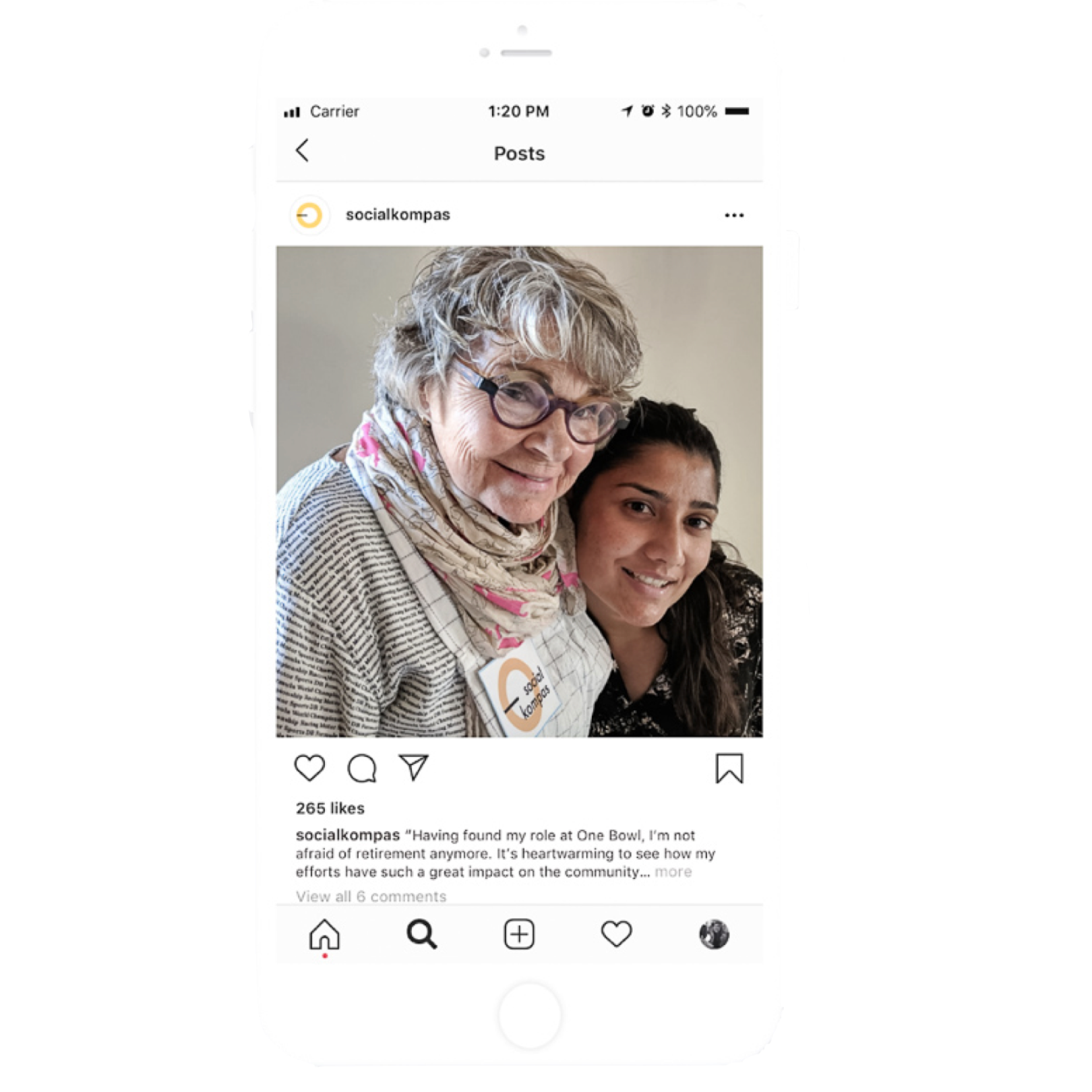
What was your process?
What was your process?
What was your process?
What was your process?
What was your process?
The project was divided into four phases: research, synthesis, co-creation and testing. We conducted desk research and visited various locations such as Absalon, Albertslund Library and Lange Eng, to maximize interview opportunities with seniors. We devoted most of our time speaking and co-creating with seniors and experts.
The project was divided into four phases: research, synthesis, co-creation and testing. We conducted desk research and visited various locations such as Absalon, Albertslund Library and Lange Eng, to maximize interview opportunities with seniors. We devoted most of our time speaking and co-creating with seniors and experts.
The project was divided into four phases: research, synthesis, co-creation and testing. We conducted desk research and visited various locations such as Absalon, Albertslund Library and Lange Eng, to maximize interview opportunities with seniors. We devoted most of our time speaking and co-creating with seniors and experts.
The project was divided into four phases: research, synthesis, co-creation & testing. We conducted desk research and visited various locations such as Absalon, Albertslund Library and Lange Eng, to maximize interview opportunities with seniors. We devoted most of our time speaking and co-creating with seniors and experts.
The project was divided into four phases: research, synthesis, co-creation & testing. We conducted desk research and visited various locations such as Absalon, Albertslund Library and Lange Eng, to maximize interview opportunities with seniors. We devoted most of our time speaking and co-creating with seniors and experts.
Video explaining our process and showcasing Social Kompas, our service concept
Story boarding the customer service experience
Story boarding the customer service experience
Story boarding the customer service experience

Synthesizing insights from our interviews
Synthesizing insights from our interviews
Synthesizing insights from our interviews
Synthesizing insights from our interviews
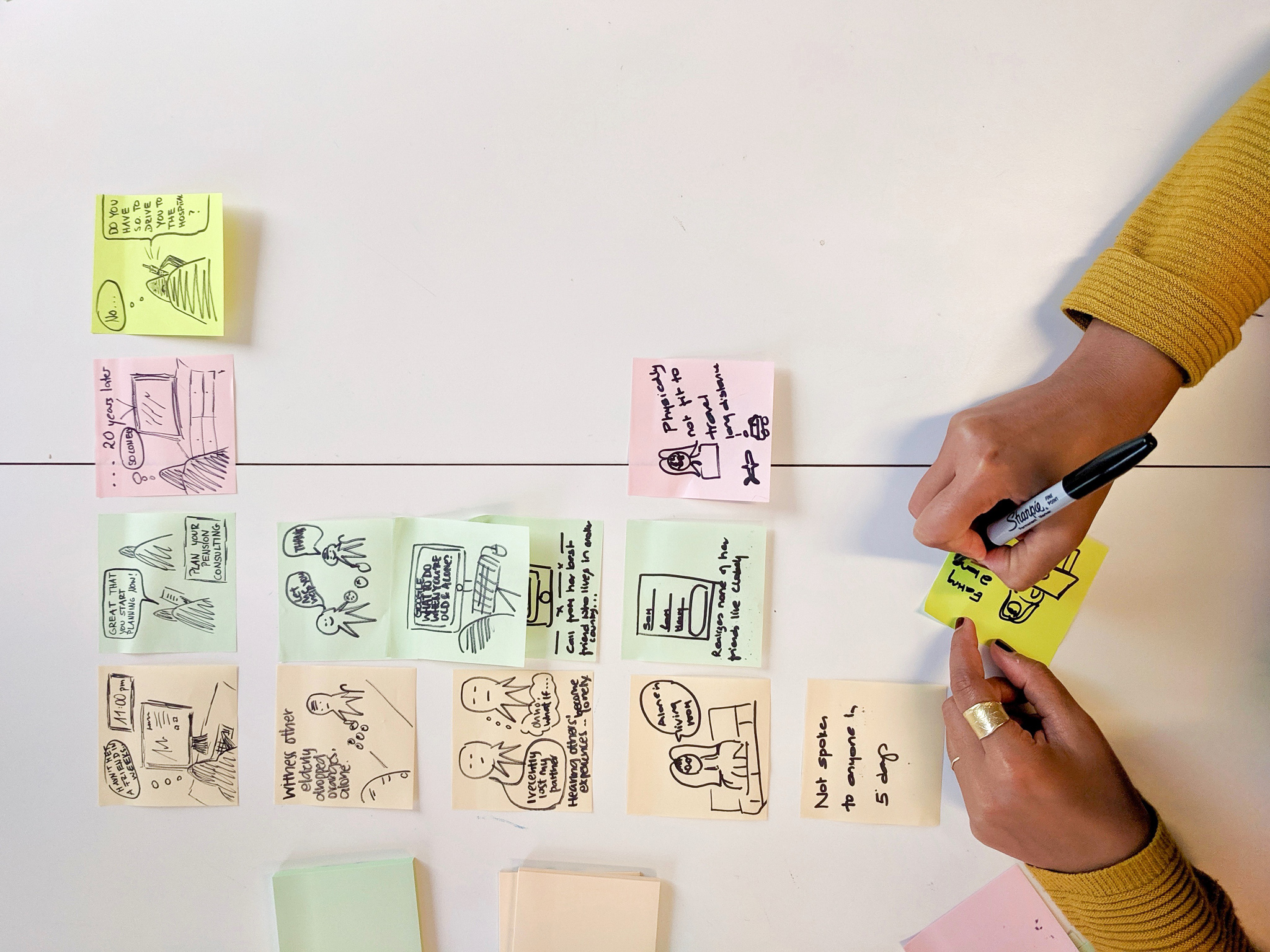
Storyboarding the service experience helped us identify gaps & opportunities to continuously refine our service
Story boarding the customer service experience
Story boarding the customer service experience
Story boarding the customer service experience
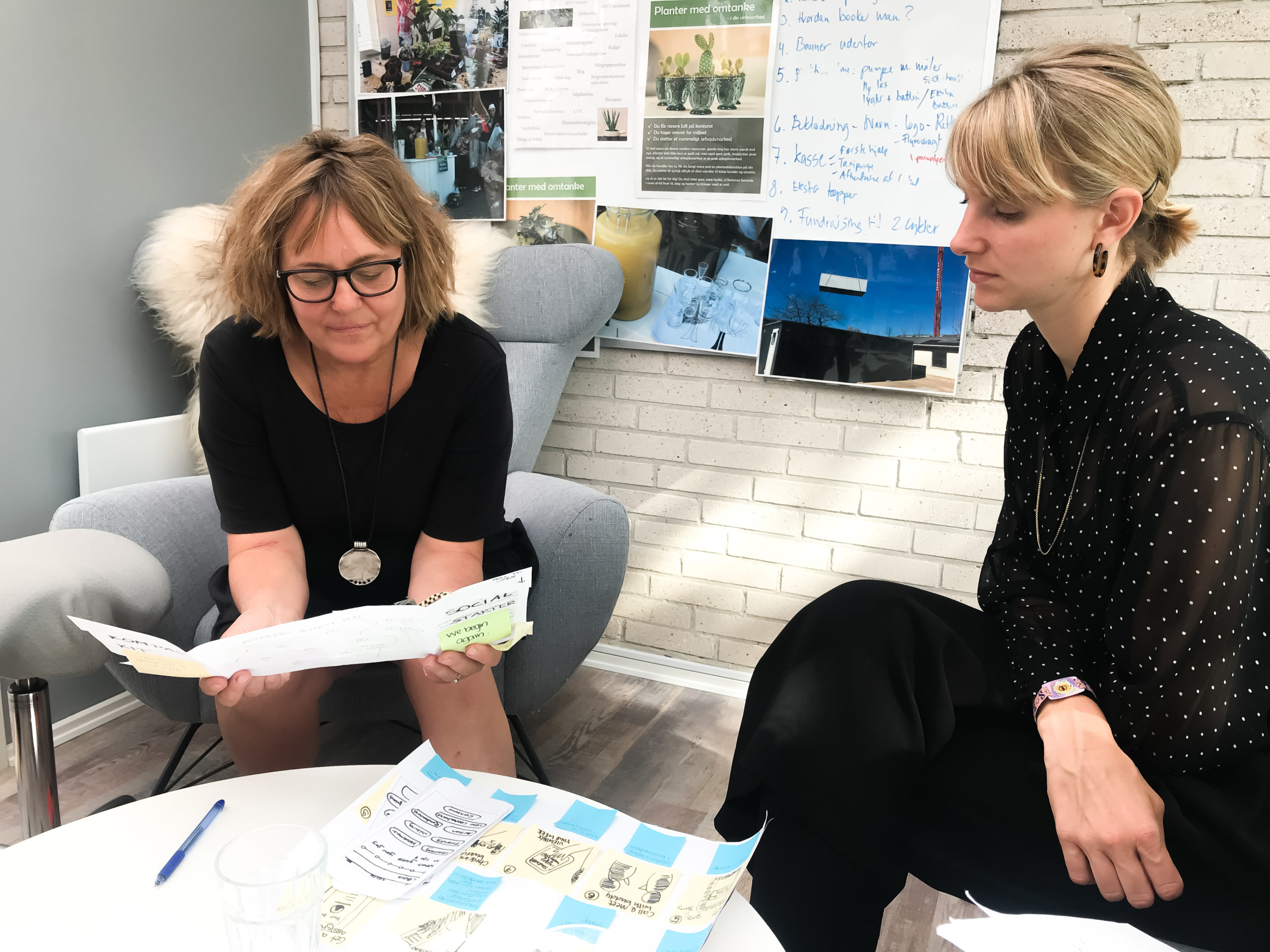
One of many co-creations with experts and seniors
One of many co-creations with experts and seniors
One of many co-creations with experts and seniors
One of many co-creations with experts and seniors
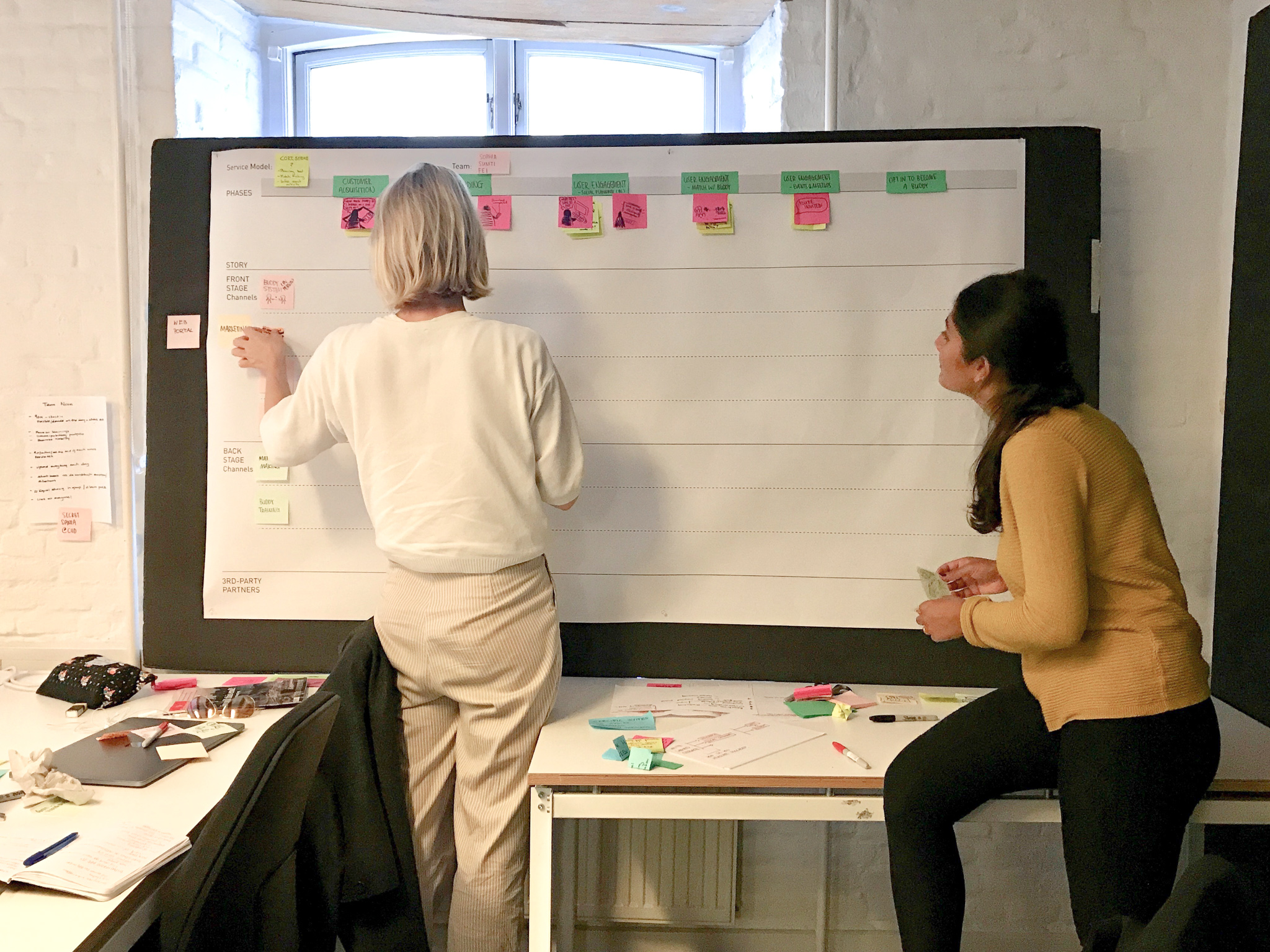
Creating a service blueprint to flesh out touchpoints, including back-end processes to give us a more comprehensive understanding of the experience holistically
Creating a service blueprint to flesh out touchpoints, including back-end processes to give us a more comprehensive understanding of the experience holistically
Creating a service blueprint to flesh out touchpoints, including back-end processes to give us a more comprehensive understanding of the experience holistically
Creating a service blueprint to flesh out touchpoints, including back-end processes to give us a more comprehensive understanding of the experience holistically
Creating a service blueprint to flesh out touchpoints, including back-end processes to give us a more comprehensive understanding of the experience holistically
What were your learnings?
What were your learnings?
What were your learnings?
What were your learnings?
What were your learnings?
1. Prioritise touchpoints
There are bound to be numerous opportunities for improving a service. Therefore, picking your battles and tackling the most relevant touchpoints that yield your desired objectives is key.
2. Be open to pivot
Design is never done. It’s important to iterate often and learn from previous iterations. Various co-creations exposed our team to new insights and "aha!" moments sometimes happened only later on. I learned to be comfortable to adapt and quickly pivot to identify and tackle the right questions.
3. Show, not tell
Presenting something tangible during interviews helps the audience understand your ideas, facilitates engagement and feedback. It gives you a sense of how clear your concept is with limited explanation. Regardless of fidelity, visual props can also spark conversations about ideas, pose questions and highlight unforeseen problems.
What was your role in this project?
What was your role in this project?
What was your role in this project?
What was your role in this project?
What was your role in this project?
I was involved in all phases of this project with a focus on research, prototyping and visual storytelling through video.
In addition to ideation and concept development, I designed the starter toolkit using Adobe InDesign and graphical elements with Sketch. I also created a storyboard, conducted filming, editing and production of our concept video with Adobe’s Premiere Pro.
I was involved in all phases of this project with a focus on research, prototyping and visual storytelling through video. In addition to ideation and concept development, I designed the starter toolkit using Adobe InDesign and graphical elements with Sketch. I also created a storyboard, conducted filming, editing and production of our concept video with Adobe’s Premiere Pro.
I was involved in all phases of this project with a focus on research, prototyping and visual storytelling through video. In addition to ideation and concept development, I designed the starter toolkit using Adobe InDesign and graphical elements with Sketch. I also created a storyboard, conducted filming, editing and production of our concept video with Adobe’s Premiere Pro.
I was involved in all phases of this project with a focus on research, prototyping and visual storytelling through video. In addition to ideation and concept development, I designed the starter toolkit using Adobe InDesign and graphical elements with Sketch. I also created a storyboard, conducted filming, editing and production of our concept video with Adobe’s Premiere Pro.
I was involved in all phases of this project with a focus on research, prototyping and visual storytelling through video. In addition to ideation and concept development, I designed the starter toolkit using Adobe InDesign and graphical elements with Sketch. I also created a storyboard, conducted filming, editing and production of our concept video with Adobe’s Premiere Pro.
